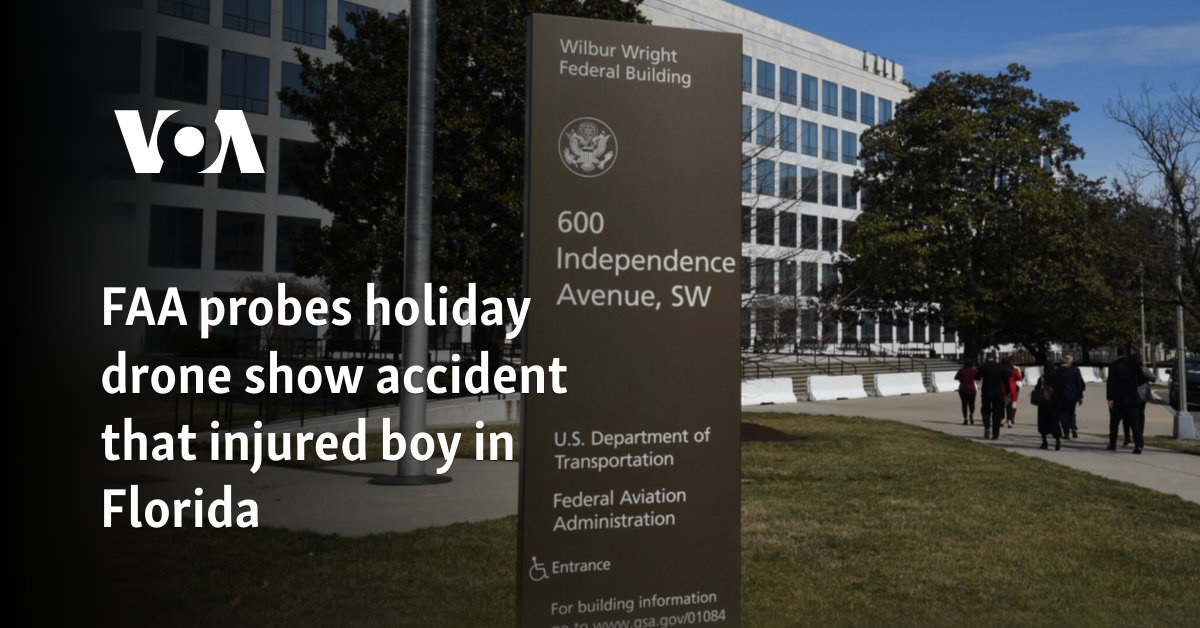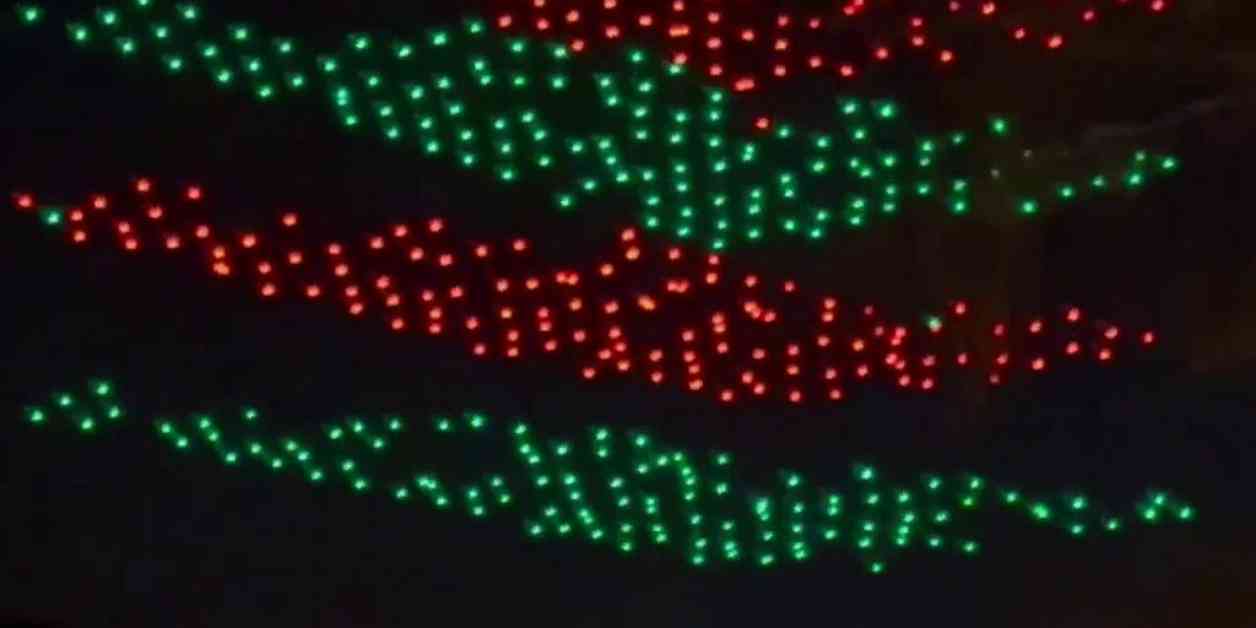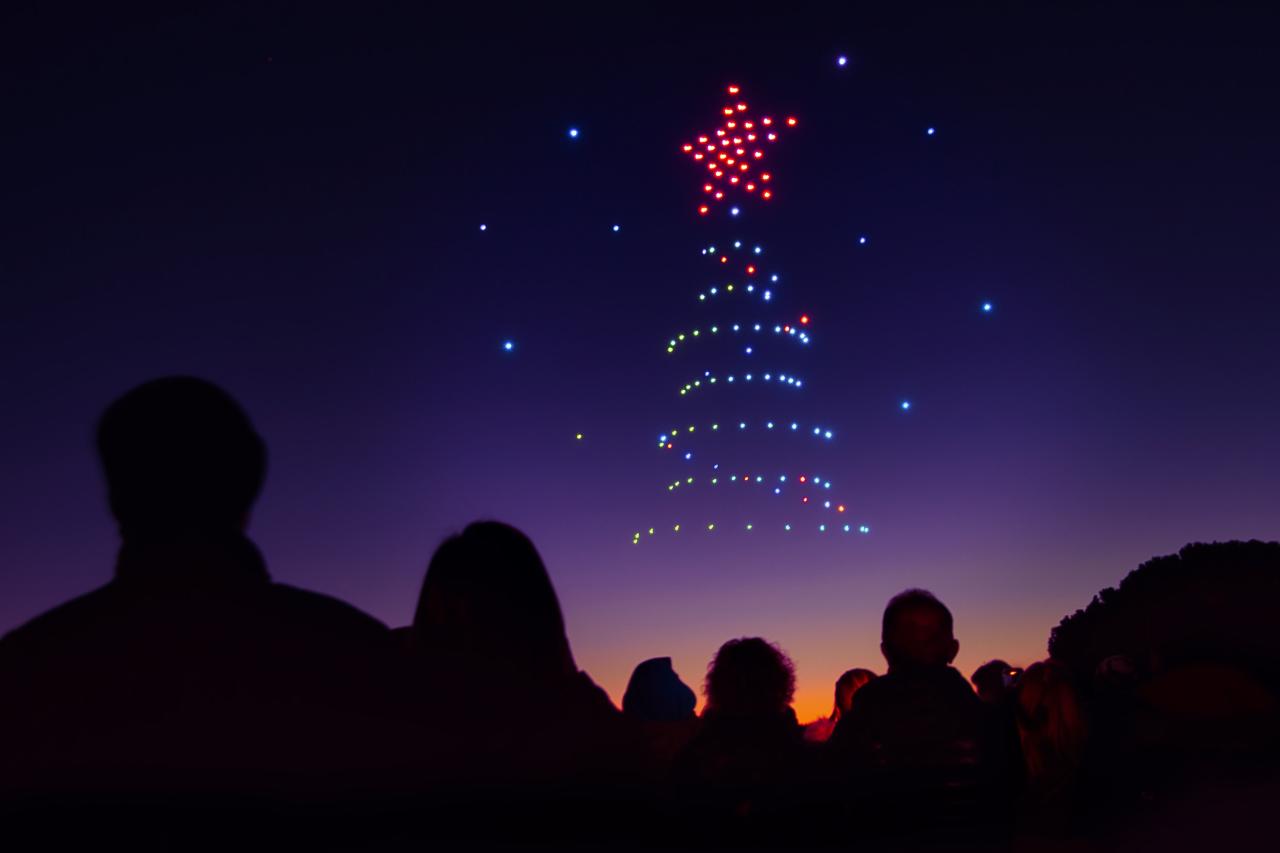Drone show accidents, while relatively infrequent, pose significant risks to both participants and spectators. This analysis delves into the multifaceted nature of these incidents, exploring the diverse causes, the impact on the industry, and the crucial role of safety protocols and technological advancements in mitigating future occurrences. We will examine various accident types, from technical malfunctions to pilot error, and analyze the resulting consequences, including economic losses and reputational damage.
The investigation will cover existing safety regulations across different countries, highlighting the need for standardized practices. We will also explore innovative technologies designed to enhance safety, such as advanced GPS systems and collision avoidance mechanisms. Case studies of notable accidents will serve as cautionary tales, offering valuable lessons learned and prompting a discussion on improving emergency response procedures and insurance coverage.
Drone Show Accidents: A Comprehensive Analysis
The increasing popularity of drone shows has unfortunately been accompanied by a rise in accidents. These incidents highlight the inherent risks involved in coordinating large-scale drone flights and underscore the critical need for robust safety regulations, advanced technologies, and comprehensive emergency response protocols. This analysis delves into the various facets of drone show accidents, exploring their causes, consequences, and potential solutions.
Types of Drone Show Accidents

Drone show accidents can be categorized based on their root causes, which often involve a complex interplay of factors. Understanding these categories is crucial for implementing effective preventative measures.
| Accident Type | Cause | Contributing Factors | Example Scenario |
|---|---|---|---|
| System Malfunction | Technical failure (e.g., GPS malfunction, motor failure, battery issue) | Poor maintenance, inadequate pre-flight checks, use of outdated or faulty equipment | A drone’s GPS fails mid-flight during a synchronized routine, causing it to lose control and collide with another drone. |
| Pilot Error | Human error (e.g., incorrect programming, poor situational awareness, inadequate training) | Lack of experience, insufficient training, fatigue, distractions | A pilot miscalculates the flight path, resulting in a collision between two drones or a drone striking an obstacle. |
| Adverse Weather Conditions | Unfavorable weather (e.g., strong winds, rain, fog) | Failure to monitor weather forecasts, inadequate risk assessment, continuing operation despite warnings | High winds cause several drones to veer off course during a nighttime show, leading to several crashes. |
| Software Glitch | Software bug or malfunction in the flight control system | Lack of rigorous testing, inadequate software updates, unforeseen environmental interference | A software glitch causes multiple drones to simultaneously descend unexpectedly during a performance. |
| Collision with Obstacles | Unexpected collision with an object (e.g., building, bird, other aircraft) | Inadequate site survey, insufficient obstacle avoidance measures, unexpected environmental changes | A drone collides with a tree during a daytime show due to an improperly assessed flight path. |
Safety Regulations and Protocols

International and national regulations governing drone shows vary significantly, impacting safety standards and operational procedures. Harmonizing these regulations is crucial for enhancing global safety.
Drone show accidents, unfortunately, are a growing concern as the technology advances. A recent incident highlighted the potential risks involved, prompting further discussion on safety protocols. You can find more details about a specific case on this website dedicated to investigating such incidents: drone show accident. Understanding these events is crucial for improving the safety and reliability of future drone shows.
Regulations in the United States often focus on pilot certification, airspace restrictions, and operational limitations. The European Union has implemented stricter regulations, emphasizing comprehensive risk assessments and the use of advanced safety technologies. China, a major player in the drone industry, has its own specific guidelines focusing on registration, licensing, and operational permits. These differences highlight the need for international collaboration in establishing consistent safety standards.
- Comprehensive pre-flight inspections
- Redundant systems (e.g., backup flight controllers, batteries)
- Real-time monitoring and control systems
- Meticulous flight planning and simulation
- Thorough weather monitoring and contingency plans
- Well-trained and experienced pilots
- Emergency response protocols
- Strict adherence to airspace regulations
Impact of Accidents on the Drone Show Industry
High-profile accidents can severely damage public trust and hinder the industry’s growth. A single major incident can lead to increased scrutiny, stricter regulations, and a decline in investment.
Imagine a scenario where a large-scale drone show malfunctions, causing widespread damage and injuries. The resulting negative media coverage could deter potential investors, lead to stricter regulations, and damage the public’s perception of drone shows for years to come. This could translate to significant economic losses for show organizers, drone manufacturers, and related businesses.
Technological Advancements for Accident Prevention, Drone show accident

Several technological advancements are being developed to enhance drone show safety. These aim to minimize human error and improve the resilience of drone systems to unexpected events.
Recent drone show accidents highlight the need for robust safety protocols. These incidents underscore the importance of precise coordination, prompting thoughts of similarly complex logistical operations, such as tracking Santa’s journey – you can find the norad santa tracker phone number if you’re curious about their tracking methods. Ultimately, understanding the challenges in both scenarios—from festive tracking to large-scale drone displays—is key to preventing future mishaps.
| Technology | Effectiveness | Limitations |
|---|---|---|
| Improved GPS Systems | Enhanced accuracy and reliability in positioning | Vulnerable to GPS jamming or signal loss |
| Redundant Flight Controllers | Increased system resilience to single-point failures | Added weight and complexity |
| Collision Avoidance Systems | Detection and avoidance of obstacles | Limited effectiveness in complex environments |
| Advanced Sensor Fusion | Combines data from multiple sensors for enhanced situational awareness | Computational demands and potential for sensor errors |
Case Studies of Notable Accidents
Analyzing past accidents provides valuable insights into the causes and consequences of drone show failures. This informs the development of more effective safety protocols.
Case Study 1: (A detailed description of a significant drone show accident, including causes, consequences, and resulting changes in safety protocols would be included here. This would focus on the physical damage, such as drones falling from the sky, and the emotional impact, such as fear and anxiety among spectators.)
Key takeaway: The importance of rigorous pre-flight checks and redundant systems.
Case Study 2: (Another detailed description of a significant drone show accident, including causes, consequences, and resulting changes in safety protocols would be included here.)
Key takeaway: The critical role of pilot training and experience.
Case Study 3: (Yet another detailed description of a significant drone show accident, including causes, consequences, and resulting changes in safety protocols would be included here.)
Key takeaway: The need for robust weather monitoring and contingency planning.
Emergency Response Procedures
Effective emergency response procedures are essential for minimizing the impact of drone show accidents. These procedures should be clearly defined and regularly practiced.
- Immediate halt of the drone show operation.
- Activation of emergency communication channels.
- Assessment of the situation and identification of affected areas.
- Evacuation of spectators and personnel from the danger zone.
- On-site first aid and medical assistance.
- Securing the accident site to prevent further damage or injury.
- Investigation of the accident to determine the cause.
- Communication with relevant authorities and stakeholders.
Insurance and Liability

Comprehensive insurance coverage is crucial for mitigating the financial risks associated with drone show accidents. This includes coverage for property damage, injuries, and potential lawsuits.
Various types of insurance are available, including liability insurance, property insurance, and public liability insurance. Organizers, pilots, and manufacturers all have potential liability in case of accidents. Understanding these liabilities and securing appropriate insurance coverage is essential for protecting all parties involved.
Ultimately, preventing drone show accidents requires a multi-pronged approach. This involves robust safety regulations, rigorous pilot training, the adoption of advanced safety technologies, and comprehensive emergency response plans. By understanding the causes and consequences of these incidents, the drone show industry can work collaboratively to foster a safer and more reliable environment for both operators and audiences, ensuring the continued growth and enjoyment of this captivating form of entertainment.
Quick FAQs: Drone Show Accident
What is the most common cause of drone show accidents?
While varied, pilot error and technical malfunctions (including software glitches and battery failures) frequently contribute to drone show accidents.
What legal repercussions can a drone show operator face after an accident?
Drone show accidents, while rare, highlight the complexities of large-scale aerial displays. Understanding the technical aspects involved is crucial for preventing future incidents, and resources like the live feed from the cobequid pass camera can offer valuable insights into drone operation and potential hazards. Analyzing such data could help improve safety protocols and minimize the risk of future drone show mishaps.
Legal repercussions vary by jurisdiction but can include fines, license suspension, or even criminal charges depending on the severity of the accident and any resulting injuries or damages.
How can spectators stay safe during a drone show?
Spectators should follow the instructions of event organizers, maintain a safe distance from the show area, and avoid interfering with the operation of drones.
Are there specific insurance policies designed for drone show operators?
Yes, specialized insurance policies covering liability and potential damages are available for drone show operators, often tailored to the specific risks involved.
